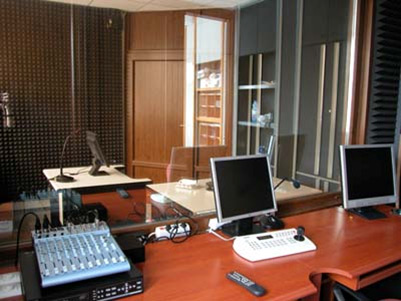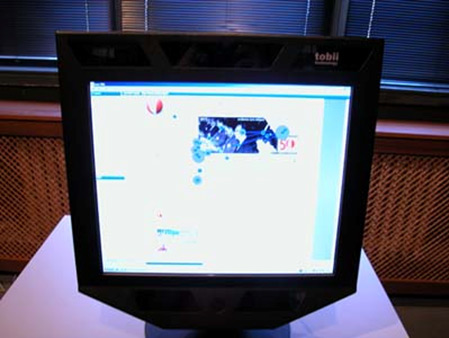
| The Human Computer Interaction Laboratory at METU CC and the Studies Conducted | |
|
1. Introduction It is an undisputable fact that the computer, which was once only operated by experts during the years it was first introduced and was produced in small numbers, is now an indispensable part of human existence. Therefore it gains more and more importance that the computers and the software running on them i.e. the interfaces can be effectively and efficiently used by everyone and should be further improved to meet that need. In the light of this progress, to conduct studies on the field termed Human-Computer Interaction, with a project proposed to be developed within the Middle East Technical University Computer Center a Human Computer Interaction Research and Application Laboratory has been activated. In this document, the purpose of setting up the Human Computer Interaction Research and Application Laboratory, and the studies that can be conducted are conveyed and the technical features of the lab and the possibilities it will provide are mentioned. Information about how the usability studies, which is one of the aims of founding the laboratory, are carried out and the other studies accomplished are stated. 2. The Foundation Purpose The Human Computer Interaction Research and Application Laboratory run within the METU Computer Center was established and started functioning in June 2006 in order to support the development stage of the web pages of departments / units, to assist the designers with the design of interfaces developed by the CC, to carry work on accessibility, to provide a medium for academic research purposes, and to provide support for the development of effective and efficient interfaces cooperating with other universities, the public and the private sector. One function of the laboratory is to evaluate the usability of interactive interfaces. At the laboratory, together with the traditional usability tests and the data provided by the eye movement tracking device more reliable data is provided. With this facility, the information about the user's approach to the interfaces at the design stage, during the design process or afterwards, how the user makes use of them, what problems the user encounters, is obtained thus further improvements are made possible, in short, it is aimed to assist the user in making lesser mistakes and in achieving the task in a shorter time with less difficulty. 3. The Technical Layout The Human Computer Interaction Research and Application Laboratory consists of two separate rooms. The rooms termed as the Control and Test rooms are sound proofed in order to minimize the sounds from the outside which can distract the subject during the tests. Furthermore, a one-way mirror is installed between the rooms so that the observer in the control room can observe the user in the test room while the latter can not see the control room or the researcher. 3.1 The Control Room In the control room there is a computer for the observers' use the screen view of which is recorded by Morae, the software generally used in usability studies, and also by another computer which is connected to the camcorders. Also a second keyboard, mouse, and monitor output from the Eye Tracker in the test room facilitates the control of the computer in the test room by the observer in the control room. Another screen is used to monitor the images recorded by the two camcorders in the test room, the eye tracker screen the subject conducts the test, and the observer's computer screen. Recording all four screens together simultaneously is important for the synchronization. 
Figure 1: The Control Room There is a recording computer connected to this monitor, the cam corders and the sound system. This computer synchronously records all the data from the other components and writes CD for backup or provides them via the network. Furthermore there is a control unit adjusting the features like the camera angles and distances. By means of this unit independent adjustments for the cameras are possible different angles and zoom levels can be defined and recorded. In addition to these, there are two amplifiers, three speakers, two mikes and a sound mixer to provide communication between the test and the control rooms. All the settings of the sound system are done via the sound mixer at the control room. When the need arises the sound mixer is coupled to the observer's computer to perform high quality sound recordings. The illumination is from ceiling spots and side lightings and this system can also be adjusted from the control room. 3.2 The Test Room: This is the room where there is a computer the subject will use all alone and try the interface under study and therefore it is designed to minimize any distracting factor from the outside by sound proofing and a one way mirror. The computer that the subject will test the interface on is connected to the eye tracker which looks like a regular monitor but has two reflectors, three infrared detector cameras coupled to it. On this computer the Morae Manager software may be run optionally via the network connected to the Morae Recorder software running on the observer's computer in the control room. The eye tracker supplies information on where, how long and how many times the subject looked at and where he/she intensified his/her instantaneous and past looks, focus and mental state. With the digital and visual information supplied in this manner it becomes possible to express opinion about the interaction of the user with the interface. 
Figure 2: The Eye Tracker Besides the data supplied by the eye tracker there are two Dome Type high resolution cameras mounted at the ceiling capable of moving 3600 horizontally, ~900 vertically to record the subjects facial and hand movements. The communication with the control room is maintained by a microphone placed at the ceiling so as not to distract the user. There are also two separate speakers which can be adjusted independently. 
Figure 3: The Test Room 3.3 The Software: ClearView: Clearview is a software developed by the manufacturers of the eye tracker that transforms the information received from the reflectors, the infrared detector cameras into visual and digital data, records them and later provides various tools for analyzing the data saved. NOLDUS OBSERVER: There is software that transforms observations into computer language and then provides statistical information and charts from these. The Observer is the software is used for gathering, managing, analyzing and presenting the observed data. This software is not only a means for gathering data for behavioural development, communication, education, language acquirement, cognition, psychological evaluation studies but also for product usability and human-machinery interaction evaluations. 4. The Usability Study The evaluation of usability is conducted by getting the levels of affectivity, efficiency, and satisfaction from the user during the process of having the defined task completed by the target group for a certain interface. Once the target group, the users, is set, they are asked to access the functions mostly used and/or rarely used but containing important information on the interface to be tested and thus the interface is put to use. The Steps Taken in the Usability Study
After these four main components are designated the test stage is proceeded to. If there is a questionnaire among the other means of target to measure the user's attitude or knowledge before using the interface, it is given to the subject to fill in prior to the test. Then the tasks are given to the user one by one. For every task, information like success or no success, number of errors and duration are kept. During any task it is required of the user to think out loud so that where the user faced problems with the interface and what the user thinks about it is recorded. Throughout the test all the sayings and the actions of the subject is recorded by the observer. [1] At the end of the test the user is given an impression query to yield the level of satisfaction with the interface. In addition eye trackers may be incorporated during the processes of usability, however, to obtain concrete statistical information about the tendencies of the user while using the interface and its design. 5. Studies Carried Out Since its establishment the lab has been used for usability studies of Ministry of Justice Computing Service Portal, services provided by the METU Computer Center, Departments of Computing Sciences, Information Technologies Education, Informatics Institute, Cognitive Sciences, and computer Sciences of METU and other universities' thesis and doctorate studies, all in all in twenty-two different purposes. 6. Conclusion The Human Computer Interaction Laboratory which is a first in Turkey with regard to the facilities within has been giving support for usability studies and academic research ever since it was established. Thanks to this lab, fruitful work is being carried out by forming a more reliable experimentation medium and using the data provided by incorporating the eye tracker. Sources [1] Acartürk, C., Çağıltay, K. (2006). İnsan Bilgisayar Etkileşimi ve ODTÜ'de Yürütülen Çalışmalar.[Human Computer Interaction and Research at the Middle East Technical University]. 8. Akademik Bilişim Konferansı. 9-11 Şubat 2006. Pamukkale Üniversitesi, Denizli Presented on Akademik Bilişim 2007. Özge Alaçam - Doç. Dr. Kürşat Çağıltay |
||
| - TOP - |